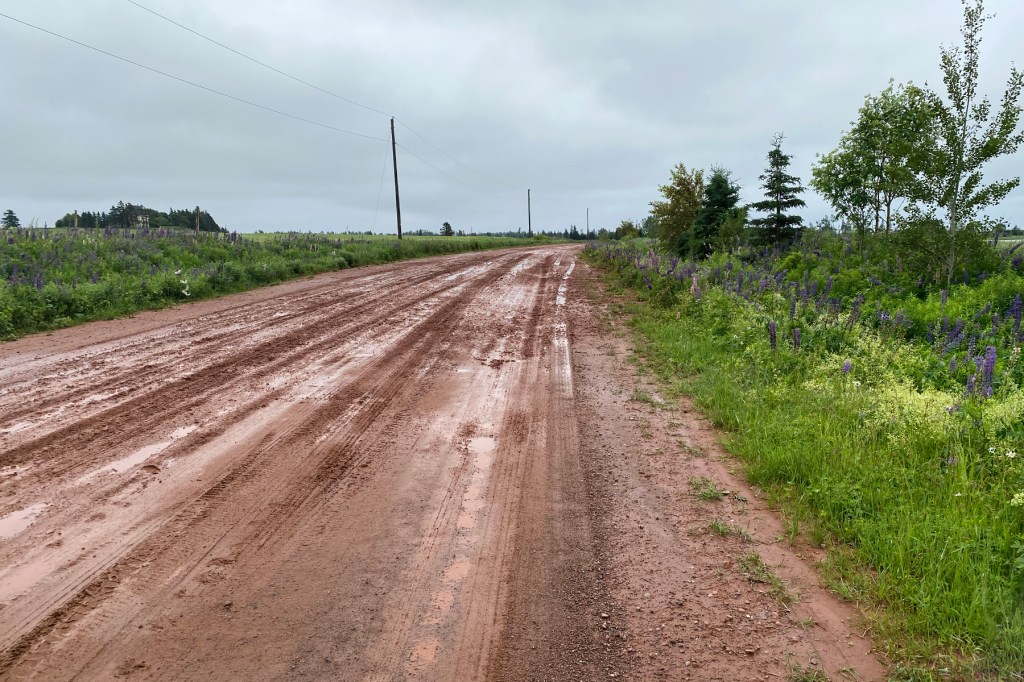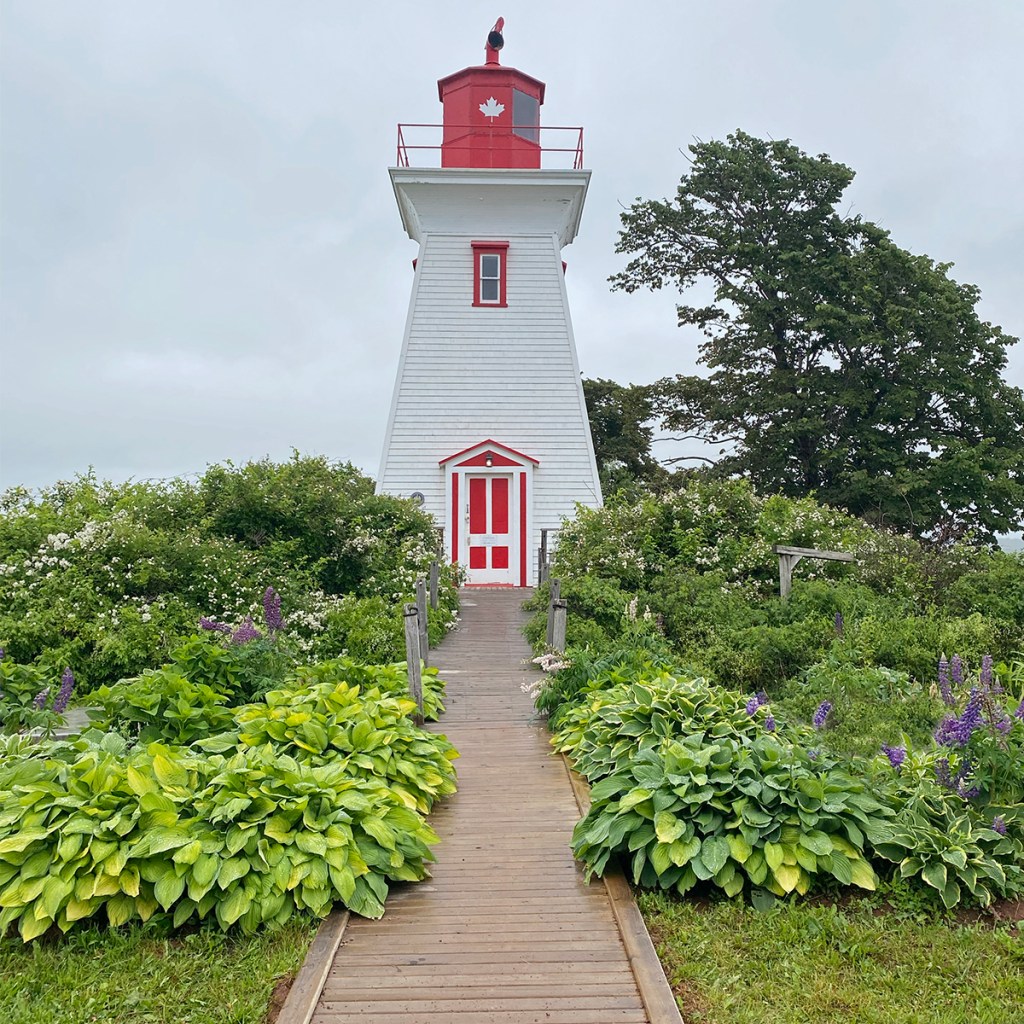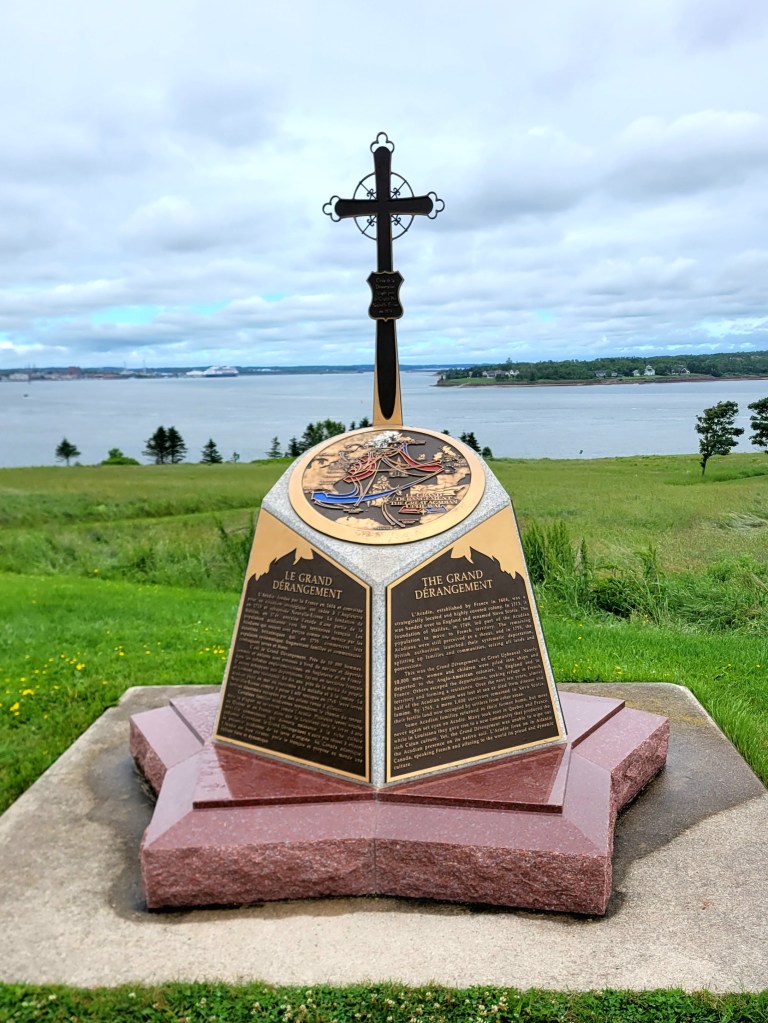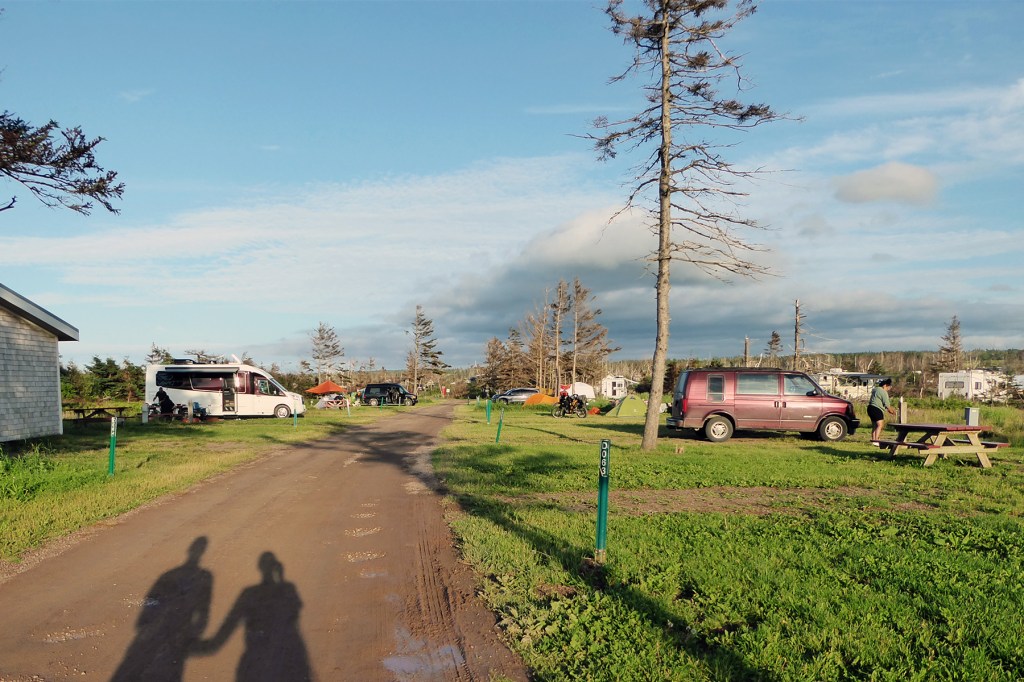Marilyn and I do a quick loop of PEI en route to Newfoundland

The last time I visited Prince Edward Island, my hair was cut straight (or almost straight) across my forehead and I had patches on my knees. Oh yeah, and there wasn’t a bridge; the only way to get there was by ferry. I don’t remember much about that childhood vacation, so this visit would essentially be my first. Marilyn had visited PEI as a teen in grade 11 on an exchange organized by her favourite English teacher, but it was based out of Moncton so her experience of the island was limited. This time we went in search of the iconic red cliffs and pastoral views.
Marilyn and I left Miramichi, NB, and took the 11 south to Shediac, then the 15 east and soon we were seeing signs for the Confederation Bridge. The clever islanders don’t charge anything to get on the island, so tourists become like lobsters wandering into the trap. Once you discover what you’ve done, it’s too late, and you feel like you’re in John Carpenter’s Escape From New York: anyone who goes on the island never comes off. In fact, the fee for motorcycles was only $20.
Marilyn wasn’t too impressed with the bridge. She asked me to write that. She thought the barriers at the sides were not very high, or not high enough. I don’t know what she was expecting for her 20 bucks, and I showed her some videos of shaky rope bridges in Nepal and Itchy Boots going over that abandoned railway bridge in Columbia but she still didn’t feel it was safe. Then I reminded her of the île-aux-Tourtes bridge we take every time we leave the Island of Montreal to the northwest and how Transport Quebec closes the outside lane to trucks because, well, I guess it can’t handle their weight, and then she felt reassured. Everything is relative.

It’s unfortunate that the first thing you see upon entering the island is a commercial complex at the base of the bridge, but it had a Tourist Info Centre and, more importantly, a liquor store. While I was stocking up on campsite refreshments, Marilyn was talking to the nice young lady at the Info Centre and discovering that my plan to ride the perimeter of the island in one day was a bit . . . ambitious. I’d read in our travel guide that it’s a 350 km. loop, but apparently that is just the central region. We abandoned our plan to get over to Cedar Dunes Provincial Park on the western tip of the island for sunset and, instead, camp at Cavendish Campground in Prince Edward Island National Park on the northern shore. That seemed more doable and left us time to explore some of the shoreline in search of those red clay cliffs.
I looked at a map and discovered Highway 10 running fairly close to the shore, so we started our tour there. We noticed we were on the Coast Trail and its road-sign icon was of red cliffs, so we knew we were on the right track, or trail, that is. I wanted to venture off the asphalt, but with the rain of the night before, the road got a little too slick for our liking. Even male bravado sometimes takes a back seat to better judgment, so we decided to play it safe, pull a U-turn, and head back to the asphalt.

Soon we entered the picturesque village of Victoria. It had a lighthouse, a wharf, and gourmet fish & chips, so our search for the red cliffs would have to wait.


After lunch, we continued along Highway 1 then turned right onto Highway 19 that went along the shore. We saw a sign for Argyle Provincial Park and pulled off to explore. Success!



A little more exploring as we headed north brought us to Skmaqn–Port-la-Joye–Fort Amherst National Historic Site, which tries to recognize in its name every group that has once laid claim to it: the Indigenous Peoples, the French, and the English. Today it’s occupied by Canadians, and specifically, me. I walked the trail while Marilyn took a break up at the welcome centre. You can see the ruins of two forts, the older being the French; the newer, the English, and a monument describing The Grand Dérangement.


As the monument states, in 1755, after the English took possession of L’Acadie, nearly 10,000 Acadians were deported to Anglo-American colonies, to England, and to France. (The Cajun culture of Louisiana derives from its Acadian history.) Over the next ten years, about half died to disease and famine. A mere 1,600 remained by avoiding deportation, but their lands were now occupied by other settlers. Yes, Canadian history, like all history, is a story of war and conquest, with winners and losers in a primordial dynamic that continues today.
I think much of the thought surrounding “privilege,” “victim status,” “inter-generational trauma,” and “reparations” on university campuses and political discourse today stems from a sense of guilt or shame about these histories in an attempt to somehow right the wrongs of the past. My personal belief is that you can’t change the past, as much as we’d all like to, either in our personal lives or in the history of a country. Trying to do so is impossibly messy, hundreds of years after the events, and results in things like white children being told in school to apologize formally to black and indigenous children for things they never did (I’m not making this up). Rather, I think the time would be better spent learning history so we don’t repeat those mistakes, but I’ve found my students to be quite historically ignorant. It’s not their fault. Many educators are more interested in teaching values than history, and here in Quebec, the government dictates a rather selective view of its history. Meanwhile, wars and ethnic cleansing continue throughout the world, and the language wars continue here in Quebec.
Back at the building, I met up with Marilyn and we continued our journey northward, avoiding Charlottetown and zig-zagging toward our destination for the night. There are no direct roads across the island, but we were happy to take our time as we rode through those pastoral rolling hills that were the second goal of our visit. We’d been warned that Prince Edward Island National Park had been devastated by Hurricane Fiona in September 2022 and that the campground had been stripped bare of much of its old growth trees, but it’s one thing to hear this and another to see it.


We set up camp and then decided to take a little ride along the shoreline.
We returned to camp in time for Marilyn’s favourite activity, sunset viewing, and there’s no better place to view a sunset than on a beach.

We only had one day on the island, but I’m glad we went. Like all islands, it definitely has a different energy and a slower pace to mainland life. The ferry that could take us across to the north shore of Nova Scotia was out of service, so we traversed the island again, this time taking a more direct, central route down Highway 13. You can’t speed much on these roads, but I did my best.
Soon we were crossing the bridge again and saying good-bye to Prince Edward Island. We loved it and were sad to leave, but we were now less than a day away from boarding our ferry to another island and the true destination of our summer tour.